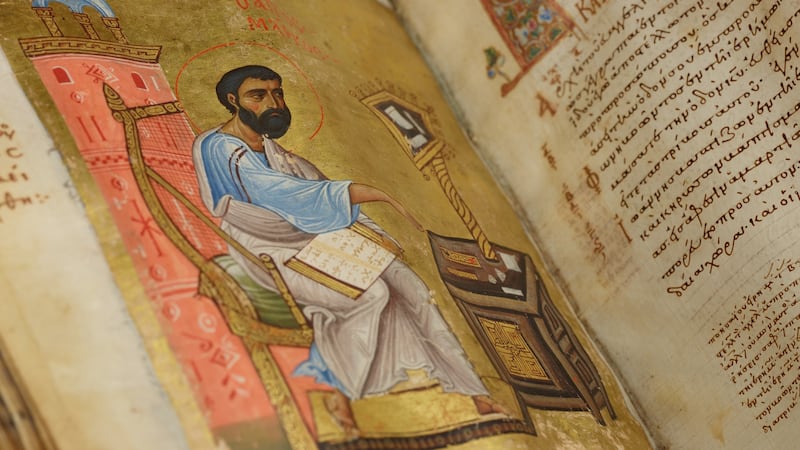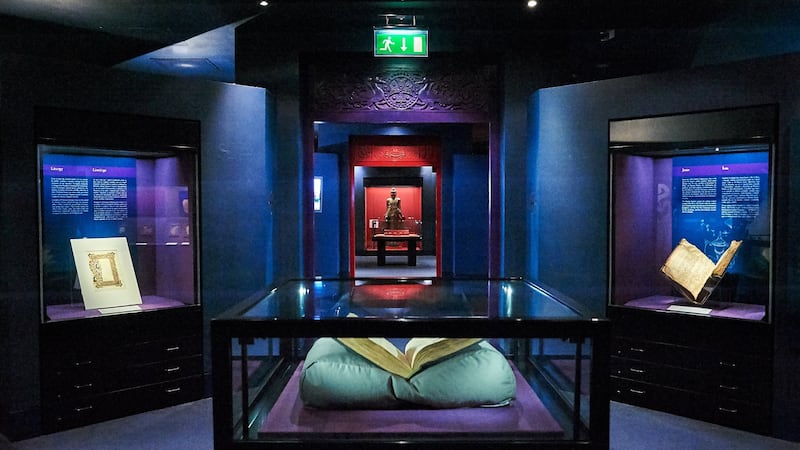Visitors admiring the extraordinary Islamic and Far Eastern artefacts on display at the Chester Beatty might be surprised to learn that, at any given time, only between 2 to 4 per cent of the museum's collection is on display.
Long recognised as one of the State’s greatest cultural attractions, the museum is also widely acknowledged as holding among the most significant collections of its type ever assembled by a private collector. American mining magnate Alfred Chester Beatty set up the museum in 1950 to house his priceless assortment of ancient manuscripts, rare books and other treasures from Europe, the Middle East, North Africa and Asia.
While those lucky enough to live locally can get to easily enjoy its treasures for free, those living overseas, including many scholars, have not been so blessed. Given its obvious focus on artefacts from outside of Europe, many who would love to spend time exploring the collection simply can’t make it in person.


Thankfully, a move to make the collection widely available online not only opens it up to an overseas audience but also has the benefit of throwing some light on those items not currently on display.
"Because of the nature of our collection, it is truly is international, so it is wonderful that people from outside of Ireland also get to experience it through our project," explains Tim Keefe, head of digital at Chester Beatty.
The museum began its digital transformation project in 2017, when it acquired a state-of-the-art medium-format digital camera and opened a digitisation laboratory to support the imaging of its collection.
“Right now, we’ve about 12.5 per cent of our collection digitised and we’re hoping that, at some point, all of it will be available to an online audience,” says Keefe.
Online repository
Tied to the opening of the digitisation programme was the establishing of an online repository of images that can be viewed by both casual browsers and scholars. People can freely download high-resolution images as well, providing they are for non-commercial use.
Chester Beatty’s digital department now consists of two photographers, a digital curator and a services assistant.
“It is hard to know just how long it will take before the full collection is digitised, as it is very much a bespoke process because of the nature of the content,” says Keefe. “We could have, for example, a big manuscript that opens easily and has thick, robust pages which might take only a few days to get hundreds of pages done. At the same time then we could have an item that is in a more fragile condition that could take many months.
“The type of difficulties we can run into include issues such as bound books where pages might have curled around the spine. We also have oddly formatted objects that can be difficult to work with, such as tiny books. In contrast, an item we are working on currently is an 80-metre long Hebrew scroll. We also have to grapple with concertina books, unusual textiles, gold plating and so on, all of which present challenges.
“Some materials such as jade books or gildings in the carvings contain materials that are so rare that it is hard to figure out how to take pictures of them because there is nothing to reference against. In those situations, we can’t google it to find out how others have approached it so we just have to experiment,” Keefe adds.
Catalogue
Another issue can be when exactly to catalogue items. Typically this is done when the collection is being rotated.
“One of our biggest challenges is that we have to change the majority of what is in the gallery once a year because, due to the nature of the materials, they can’t be on display for long periods, as they might be able to in, say, an art gallery. The fact that we rotate items so frequently is fantastic as otherwise there are many things that wouldn’t get shown.
“It does create a burden in terms of creating and cataloging content, but is also the ideal time to digitise artefacts,” says Keefe.
The American, who has more than 20 years' experience working in digital imaging, including more than seven at Kodak, joined Chester Beatty after spending a decade working at Trinity College Dublin, where he held a similar role.
Keefe admits to being initially unsure just how open his new colleagues might be to his arrival at the museum.
“When I first came here, I wondered whether everyone would be onboard with the project because, to do this, we are not just reliant on those working in the digital department but on all the museum’s staff, from conservation to curators to registrars.
“It was great to see how everyone was so excited about the project internally. It was also important because we can’t just grab items and take a few photos of them. Everything we digitise has to have a conservation evaluation, cataloguing needs to be done, items have to be gently transported and so on. Nothing we do is simple,” he says.
Compared with many institutions, the museum has been somewhat slow to digitise its collection, in part due to constrained resources as a result of the downturn. While this means Chester Beatty is in catch-up mode, there are some advantages.
“In some ways there are benefits associated with things not having happened earlier on. For example, the cost of photographic equipment has come down, particularly at the high end. Also, the repository infrastructure is much more robust and you can buy it off the shelf now whereas 10 to 12 years ago you would have had to build your own with all the costs that entails,” says Keefe.
Conservationists
He says the department is guided by conservationists when it comes to digitising content and will often choose a variety of formats.
“There is no right way to do this. Some organisations might opt to make text more readable if it has faded but, for us, it is about capturing items in the state they are in at the time we take the image. Processing is very hands-off so, while we may correct for deficiencies, it would be very soft touch. There is no airbrushing going on.
“Luckily, the collection is in great condition so it isn’t a big factor anyway,” Keefe adds.
He acknowledges that long-term digitisation is a key challenge, not just for Chester Beatty but for all organisations.
“We are a member of the digital preservation coalition which helps us to figure out how to keep up with best practices. A lot of it is about continuously evaluating what we have and documenting it all so we have a record of how an item has been captured for future reference.”
In addition to digitising its collection, the museum is shortly about to roll out a new mobile app that will allow users to look at individual items. It also provides audio tours and 3D walkthroughs, allowing individuals to visit the Chester Beatty from home.
The museum has installed beacons that interact with the app, alerting people as they walk into particular spaces that audio and other content are available for particular items they are facing.
“We have a 3D walkthough pilot of one of our temporary exhibitions up on the website right now that will also be on the app.The plan is to cover most spaces in the museum so that temporary exhibitions will have a permanent home online. It is a fantastic opportunity for those who aren’t in Ireland to visit us and experience the beauty of our collections,” says Keefe.
While in the past there may have been concerns that digitisation might lead to a drop in visitors to the museum, Keefe says the opposite is happening.
“Going digital doesn’t mean that physical objects become less important. In fact it is driving increased interest across the heritage space,” he says.











